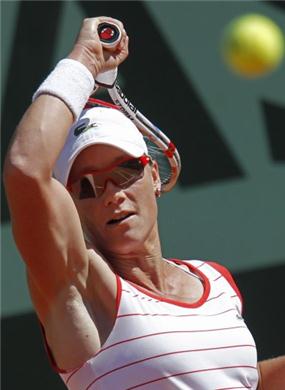Steal This Drill: Aggressive Baseline Practice Part 1
 Monday, December 5, 2011 at 09:26PM
Monday, December 5, 2011 at 09:26PM  CAtennis
CAtennis  CAtennis.com received the following message from a friend and college coach: "Dear CAtennis.com, It's been a long time. I enjoy reading your tips. I am now a college coach at _____________. I have a couple of players on my team from Europe and South America and they are having difficulty adjusting to the fast-paced game of college tennis. No matter what I do, they just want to stay back and grind (like you, haha). Are there any drills you can recommend for getting them to come in more? I hope that all's well with you and we should get together soon"
CAtennis.com received the following message from a friend and college coach: "Dear CAtennis.com, It's been a long time. I enjoy reading your tips. I am now a college coach at _____________. I have a couple of players on my team from Europe and South America and they are having difficulty adjusting to the fast-paced game of college tennis. No matter what I do, they just want to stay back and grind (like you, haha). Are there any drills you can recommend for getting them to come in more? I hope that all's well with you and we should get together soon"
Assuming that basic drills such as serve and volleying or approach-pass have been tried, I believe that part of the issue with the baseliner mentality is that they simply do not put sufficient value on points won inside the baseline. Here are two drills that one can try:
1. In the first drill, set up a the court so that there is a line about 3-4ft behind the service line on each side. At first, play regular points (maybe up to 21) and simply keep track of how many times the player ventures inside that area. This sets the measurement standard. Thereafter, play a game where the player can only hit a winner from that area (i.e. winners from baseline don't count) and that if he loses a ball from there (i.e., misses a volley or gets passed), it doesn't count. This adds a layer of confidence in that the reward of coming in outweighs the risks. In the third game, the player can still only hit winners from inside the area but he can also lose the point from there (e.g. missed volley or attacker gets passed). This means that the risks and rewards are about even. In the fourth game, adjust the scoring so that any point won from inside the area counts as two (the player can also lose the point from inside the attacking area as well as anywhere in the court). This teaches the player to add more value to points won while in an aggressive position. However, unlike the previous game, here the player can choose which point will pay the most dividend. Lastly, play another "regular" game to 21 and keep track of how they do in this game versus the first. In this game, you can also make it so that the player runs sprints (e.g. ten-balls) for the difference between points lost and number of times ventured in (for example: lost 18 points but made it inside 15 times = 3 sprints).
2. In the second drill, set up the court so there's a line about 4 feet inside each baseline. THAT line becomes the baseline. The regular baseline is the "cliff". The rule is that if the player steps behind the baseline during the point, he falls "off the cliff" and loses the point (over-stepping the side-lines is OK). As above, try to have the players compete in a couple of baseline games and see how many choose to venture inside the service line. The objective is to become accustomed to playing from this area of the court in order to be more relaxed during the transition stage. Accordingly, the players should be instructed to "work the point" rather than slapping at the ball senselessly. Once there's an opening, seek to come in and cut off the short ball or floater (regular or swinging volley).
One issue with college practices (or other "team" formats) is that the workouts are often designed to suit the greatest number of players without being tailored to a particular player's needs. In this regard, simply hitting more volleys is not likely to get the desired response from a pure baseliner. Sure, the volleys will improve but not his/her comfort level through the mid-court. CAtennis.com believes that these drills (part of a series) are a good step in the right direction to "stress inoculating" the grinders to the pace/style of American tennis. Hopefully, after a couple of focused workouts, the player will look at every point with the intention of stepping inside the baseline.






